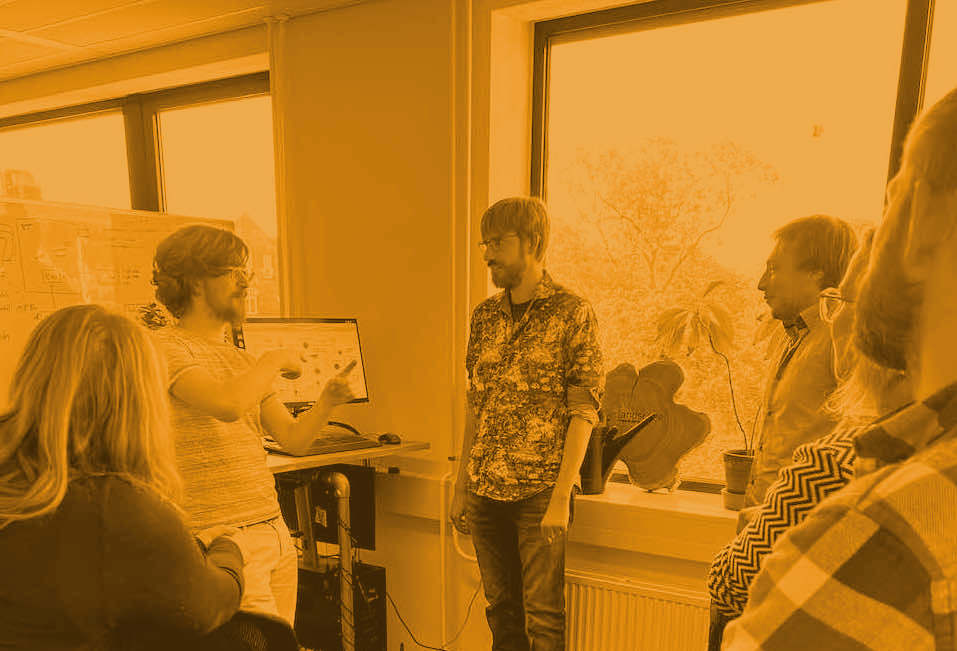Revolutionizing Industry:
The Synergy of Digital Twins and AI
Posted on January 20, 2024

By working closely together with our clients, and helping them to understand how to deliver the best data, we've seen great results.

What Are Digital Twins?
A digital twin is a virtual copy of a physical system or object that closely mirrors the behaviour of the system and reflects any changes that happen in the real world. John Gunn, data scientist and consultant at Landscape, explains: "Digital twins help us to deduce insights about the physical entity and carry out experiments in a virtual environment without any real-life risks." They allow testing of real and hypothetical situations, orders of magnitude faster than real life.
The Power of AI and Digital Twins
The digital, simulated nature of the digital twin makes it a unique and powerful training ground for AI. Usually, an AI model gets trained using data from the past, but there are many cases where such data is not available. In such situations, it is possible to nevertheless train an AI, by having it directly interact with the digital twin, and simulating what would happen. Training an AI like this, where it must learn from the (simulated) consequences of its own actions, is called Reinforcement Learning. John: "AI's primary strength lies in its ability to recognize patterns, make predictions, and learn from mistakes." It can identify patterns in the behaviour of the digital twin, from the results of its own actions. This combination gives a unique advantage: the AI can find more optimal, often novel strategies, that would be impossible to find if it were trained only historical data.
Landscape's Innovative Use of Digital Twins
Landscape have utilized digital twin technology and artificial intelligence across various industries. A notable example of their work involves the creation of a digital twin for a district heating network in Germany. John explains, "We developed a digital model of the heat network, which enabled us to simulate the heat sources, water flow, and heat consumption by a city and a hospital. This simulation allows us to experiment with different operational strategies, without any risks to the real-life network. It also enables us to simulate any number of edge cases, and model years worth of operation in a fraction of the time."
Breakthrough Results in District Heating Efficiency
John describes how Landscape's digital twin project of a district heating network produced very valuable results. "The simulations used in the twin have very high fidelity, allowing fine-grained control of the detailed parts of the district heating system. The result of the project is an AI-driven control system that dynamically controls the heating system to respond to changing end-user demands." It uses smart operational strategies that not only provide people and buildings with heat, but also optimizes energy use, reduces green house gas emissions, and limits the network from being exposes to unnecessary stress. Limiting stresses is especially valuable in components like heat storage units, which are notoriously difficult to operate optimally. The projects demonstrates the potential for digital twins and AI to create more intelligent and sustainable future for urban infrastructures.
Overcoming Challenges and Risks
The combination of digital twins and AI has immense potential, but as with any marriage, there are challenges. John highlights that one of the biggest challenges is the quality and fidelity of the simulation. In order for the AI model to be useful in real-life, the digital twin needs to be sufficiently representative. Otherwise, the AI will only learn to exploit the shortcomings of the simulation, rather than picking up on actual real-world patterns. This level of quality requires accurate data on the parts that make up the system being simulated. Obtaining such data can be challenging, which is why Landscape keeps an open dialogue on the data, the simulation and how useful the AI outcomes are. "By working closely together and helping clients to understand how to deliver the best data, we've seen great results."
The power an possibilities of AI and digital twins have been successfully showcased, but the large scale implementation of AI technology carries certain risks. Just like humans, AI systems can make mistakes, fail and create dangerous situations. But unlike humans, an AI can only understand what it is trained on and it cannot always be questioned on why it made a certain decision. "We must always aim for responsible use of AI," John emphasizes. "We know how to mitigate the risks that come with unleashing the power of AI in the real world. But you have to get it right."
The Future for AI and Digital Twins
The future is bright for the combined use of digital twins and AI. John is confident we will see powerful innovations in operational excellence, automation, system design, and many more industrial applications. "The field of AI is rapidly advancing, models are becoming more sophisticated and digital twin simulations are becoming more and more realistic. This has enormous potential across a variety of industries."